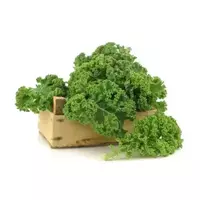Kale kale

Kale cabbage has a lot of names - among them Grunkol, Braunkol or Brunkol - and in general this vegetable plant is a species of garden cabbage, which in turn belongs to the Kale family. In the second year of life, kale begins to produce color. Lace leaves of kale of green or purple color differ from traditional cabbage species in that they do not form a head. Relative to most domesticated forms, kale is considered the closest species to wild kale.
Ideal in composition, lace kale is a kind of "hippie" in the family, which includes tightly tightened Brussels and cauliflower, as well as broccoli - looking much more respectable and available in most restaurant menus. Most likely, you will find kale cabbage forgotten, in a shrunken state somewhere in the lower part of the refrigerator - although it was purchased with undoubted intention to consume it.
However, do not underestimate this plant, which in favorable conditions can grow up to almost two meters - the useful properties of kale cabbage make up a truly impressive list. Essentially, relative to the nutrient density equal among green leafy vegetables, this plant simply does not exist.
Surprisingly, in terms of the percentage of amino acids, kale is practically not inferior to meat, and eating 200 grams of this vegetable every day is enough to fully replenish the human body with protein. In addition, stool cabbage leaves contain quite a lot of calcium, and in terms of its amount this plant is even superior to whole milk.
The beneficial properties of kale cabbage are also the content of omega-3 unsaturated fatty acids, the so-called antioxidants that save our cells from destruction and prevent the formation of cancer. It is rich in vitamins A, C, K, PP, group B and, along with all green vegetables, contains magnesium.
Kale cabbage is indispensable for vegetarian adherents: people who refused to consume dairy products for some reason are advised to include it on their menu.
In general, the best way to eat kale is considered its fine cutting or even grinding in a blender. At the same time, you need to eat this vegetable plant fresh. For example, in salads, it is perfectly combined with green onions, tomatoes, young garlic. Often, basil leaves and celery greens are added to them, tying with apple cider vinegar and olive oil. In addition, you can try combining kale with walnuts, adding parsley greens, basil and seasoning with sour cream.
kale kale 50 kKal
Energy value of kale cabbage (Ratio of proteins, fats, carbohydrates - ju):
Proteins: 3.3 g (~ 13 kCal)
Fats: 0.7 g (~ 6 kCal)
Carbohydrates: 8.01 g (~ 32 kCal)
Energy ratio (bj | y): 26% | 13% | 64%
 Español
Español Français
Français Português
Português Русский
Русский 简体中文
简体中文 繁體中文
繁體中文 日本語
日本語 한국어
한국어 العربية
العربية Türkçe
Türkçe Қазақ
Қазақ Deutsch
Deutsch Italiano
Italiano Українська
Українська
